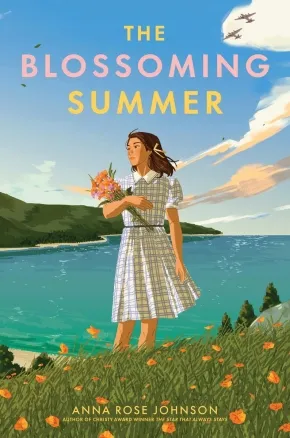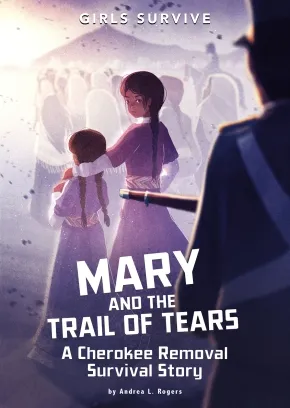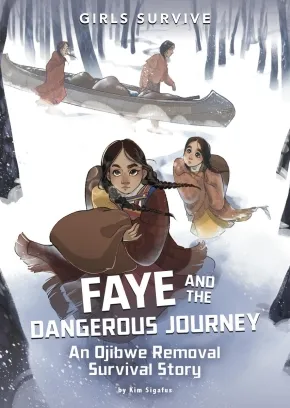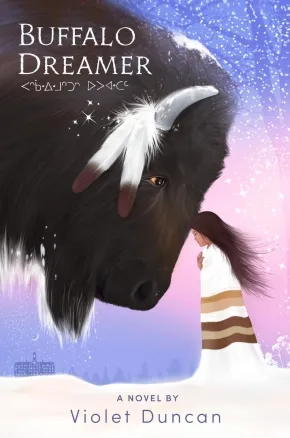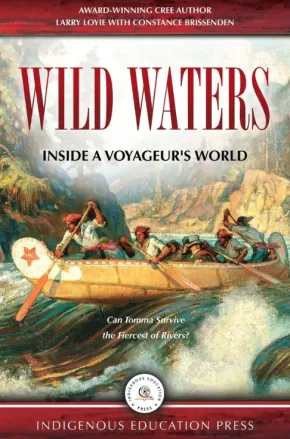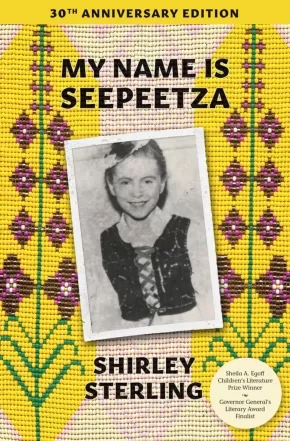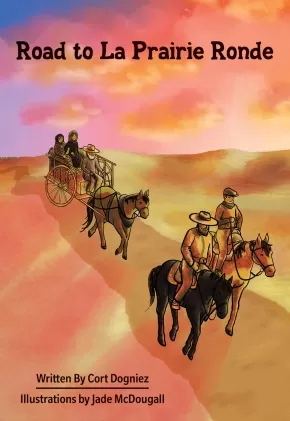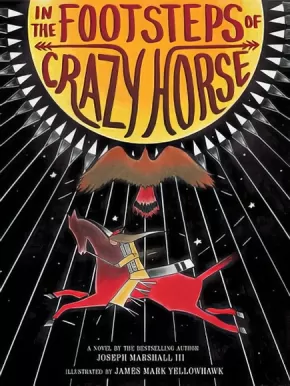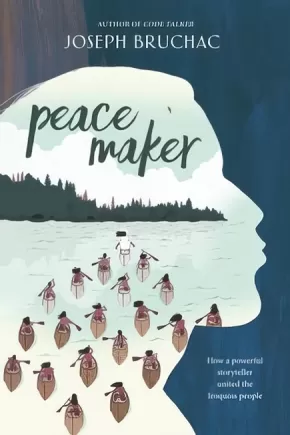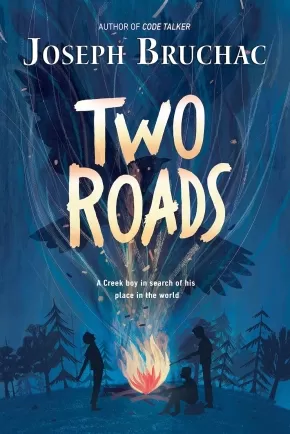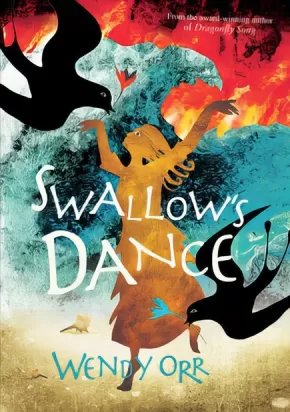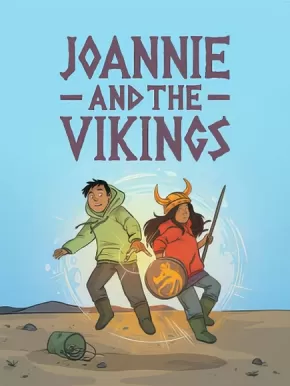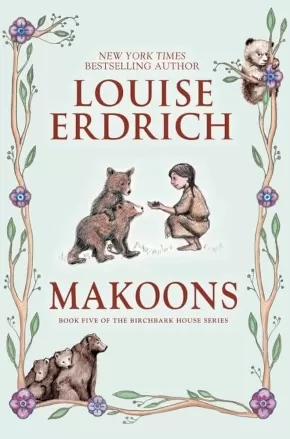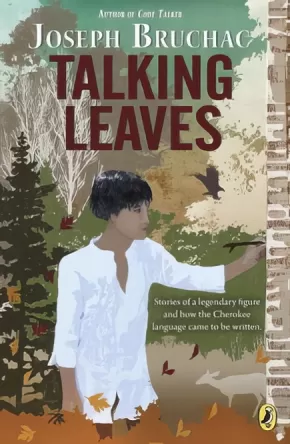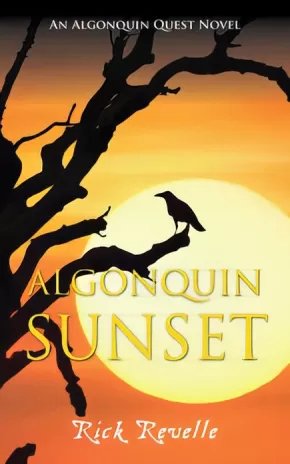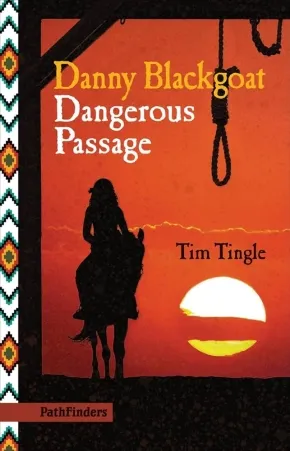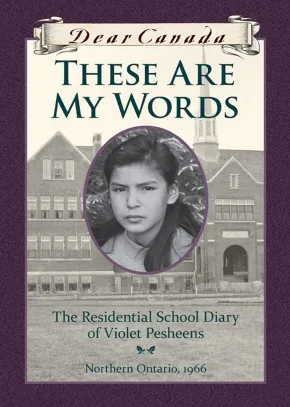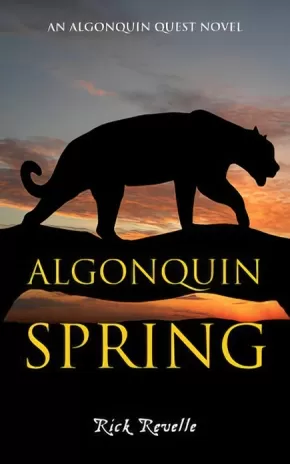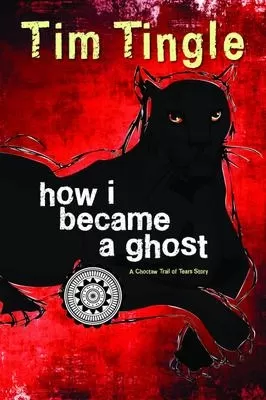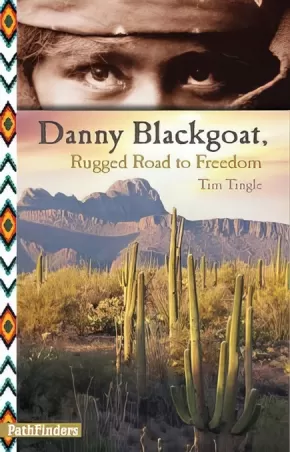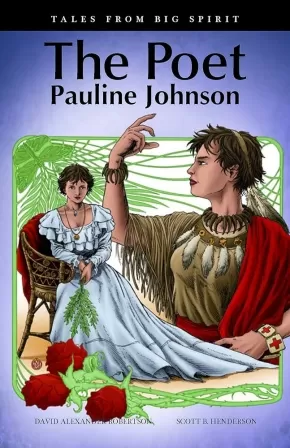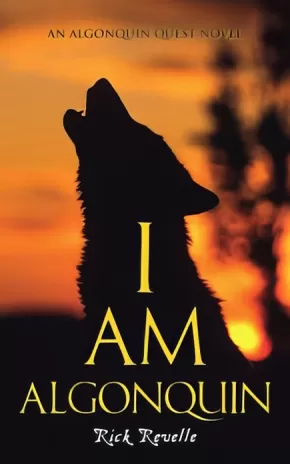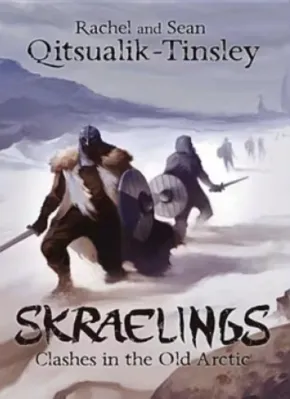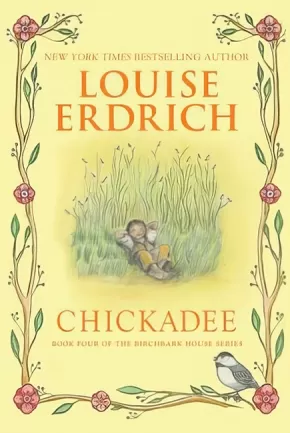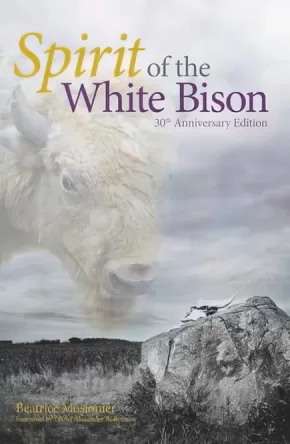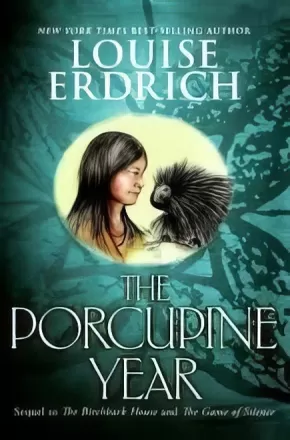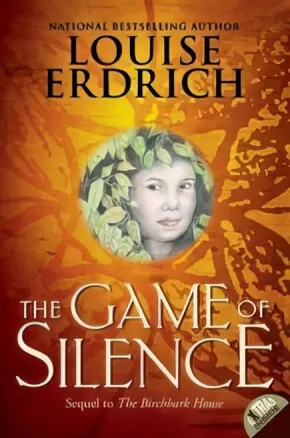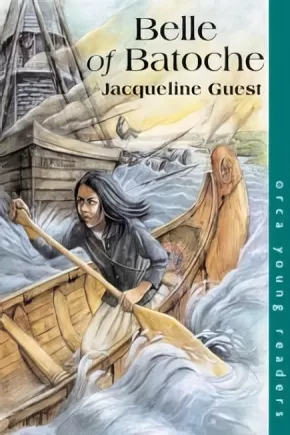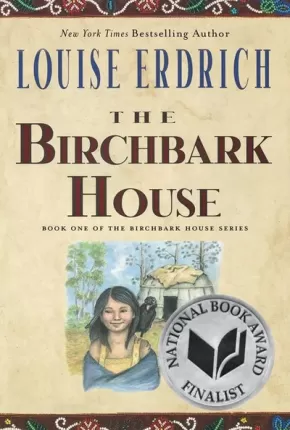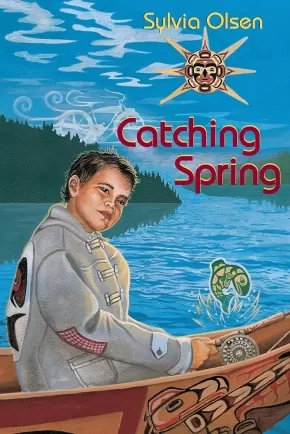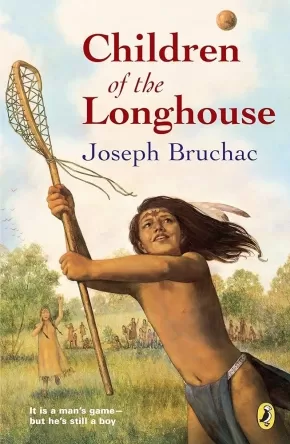
Historical Fiction
1
-
15
of
44 Results;
Sort By
Go To
of 3
The Blossoming Summer
$24.49
Format:
Hardcover
Text Content Territories:
Indigenous Canadian; First Nations; Anishinaabeg;
ISBN / Barcode: 9780823458530
Synopsis:
Synopsis:
When English thirteen-year-old Rosemary is evacuated to her grandmother in America at the start of World War II, she uncovers the family secret—they are Anishinaabe and passing as white.
Life in England is all Rosemary has ever known. . . but as WWII changes the world, no one’s life is left unscathed. Suddenly, she’s sent away to escape the devastation of London. Her grandmother’s house on Lake Superior is safe, but unfamiliar, especially as she discovers her parents have kept a tremendous secret.
Rosemary and her family are Anishinaabe—and no one is supposed to know.
Far from home but newly connected to a once-hidden part of her family, Rosemary develops a warm, close relationship with her grandmother… and a local boy whose love of gardening helps her to see the beauty in her unexpected circumstances. As Rosemary grows into her new life like a flower in bloom, she realizes that maybe she’s not as far from home as she thought.
Tender, sophisticated, and sweet, this is a beautiful story about memory, family, and identity. Rising Ojibwe author Anna Rose Johnson addresses the trauma of World War II and the legacies of hidden indigeneity alongside coming-of-age milestones like first crushes, new schools, and beginning to imagine the life you want. Hand The Blossoming Summer to fans of Christine Day, L.M. Montgomery, and Kimberly Brubaker Bradley!
Educator Information
Recommended for ages 8 to 12.
Additional Information
288 pages | 5.50" x 8.25" | Hardcover
Mary and the Trail of Tears: A Cherokee Removal Survival Story
$13.99
Format:
Paperback
Text Content Territories:
Indigenous American; Native American; Cherokee;
ISBN / Barcode: 9781496592163
Synopsis:
Synopsis:
Twelve-year-old Mary and her Cherokee family are forced out of their home in Georgia by U.S. soldiers in May 1838. From the beginning of the forced move, Mary and her family are separated from her father. Facing horrors such as internment, violence, disease, and harsh weather, Mary perseveres and helps keep her family and friends together until they can reach the new Cherokee nation in Indian Territory. Featuring nonfiction support material, a glossary, and reader response questions, this story explores the tragedy of forced removals following the Indian Removal Act of 1830.
Reviews
"Highly Recommended. Andrea L. Rogers is a citizen of the Cherokee Nation. Her book, Mary and the Trail of Tears: A Cherokee Removal Survival Story came out on February 1, 2020. I've read it and I've followed conversations about it amongst citizens of the Cherokee Nation and am hoping for a review from a professor, soon. In the meantime, I want to make sure people order it for their children, or their classroom, or their library." — Dr. Debbie Reese, American Indians in Children's Literature
"When kids need reassurance in tough times (like now, for instance), we often point them to examples from the past, to moments of resilience and courage. Mary and the Trail of Tears is ideal for that. The book was lovingly crafted by Cherokee author, mama and educator Andrea L. Rogers. It’s a window to the forced relocation of Cherokee people from what’s currently called Georgia to Indian Territory. But more than that, the story offers an opportunity for kids to really get to know and care about Mary and her family, to relate to the Cherokees of their era as human beings. (For ages 8 to 12)"— NPR's Book Concierge Best Books of 2020, Cynthia Leitich Smith, author of Hearts Unbroken
Educator Information
Recommended for ages 8 to 12.
Additional Information
112 pages | 5.25" x 7.50" | 10 Colour Illustrations | Paperback
Faye and the Dangerous Journey: An Ojibwe Removal Survival Story
$13.99
Artists:
Format:
Paperback
Text Content Territories:
Indigenous American; Native American; Anishinaabeg; Ojibwe (Chippewa);
ISBN / Barcode: 9781669086239
Synopsis:
Synopsis:
In the fall of 1850, Faye and her family begin a long, difficult journey with thousands of other Ojibwe people to receive money the U.S. government owes them. But why isn’t the money being delivered to them in Wisconsin, as usual? Why must they walk and canoe all the way to the middle of Minnesota in terrible weather? These are questions Faye asks, but the answers don’t make sense. When her family reaches their destination, Mama is sick, and there is no money as promised. Will Faye and her family make it back home? Will there be a home to return to? In this gripping story with nonfiction backmatter—including an author’s note, discussion questions, and more—readers will learn about the traumatic events of the Sandy Lake Ojibwe removal in this Girls Survive historical fiction.
Educator Information
Recommended for ages 8 to 12.
Additional Information
112 pages | 5.25" x 7.50" | Paperback
Buffalo Dreamer
$24.50
Format:
Hardcover
Text Content Territories:
Indigenous Canadian; First Nations; Cree (Nehiyawak);
ISBN / Barcode: 9780593624814
Synopsis:
Synopsis:
An illuminating novel about the importance of reclaiming the past, based on the author’s family history.
Summer and her family always spend relaxed summers in Alberta, Canada, on the reservation where her mom’s family lives. But this year is turning out to be an eye-opening one. First, Summer has begun to have vivid dreams in which she's running away from one of the many real-life residential schools that tore Native children from their families and tried to erase their Native identities. Not long after that, she learns that unmarked children’s graves have been discovered at the school her grandpa attended as a child. Now more folks are speaking up about their harrowing experiences at these places, including her grandfather. Summer cherishes her heritage and is heartbroken about all her grandfather was forced to give up and miss out on. When the town holds a rally, she’s proud to take part to acknowledge the painful past and speak of her hopes for the future, and anxious to find someone who can fill her in on the source of her unsettling dreams.
Reviews
“An important middle grade novel about a family reunion, as well as the histories of the Indian residential schools that were set up across the U.S. and Canada. . . . Based on Duncan’s family history, this novel balances an exploration of a painful events with idyllic scenes of intergenerational love and connection. Beautiful descriptions of traditional Native American culture and dress make scenes vivid for readers as Summer’s family rides horses, picks berries, prepares meals, and shares stories, even ones that have remained unspoken. A powerful addition to all middle grade library shelves highlighting a time in history that has been hidden and often forgotten in both Canada and the U.S.” —School Library
“Past and present converge in Duncan's novel about an extended Canadian Cree family spending vacation time together. . . . This story of maturation and involvement in community will appeal to readers interested in the past and in present-day social action.” —Booklist
“Summer is earnest, thoughtful, and unfailingly kind . . . the perfect narrator to introduce a heavy topic that is underexplored in literature for youth. For readers unfamiliar with the schools, enough context is given to understand the immense evil of a system that ripped Indigenous children away from their families to essentially abuse them into being acceptably ‘standard.’ Duncan’s powerful afterward offers a brief description of how her own family survived the harrowing experience of the residential school system, ending the book with a poignant sense of intimacy.” —The Bulletin of the Center for Children’s Books
Educator Information
Recommended for ages 10+.
Additional Information
128 pages | 5.69" x 8.56" | Hardcover
Four Faces of the Moon (HC) (4 in Stock)
$24.95
Artists:
Format:
Hardcover
Text Content Territories:
Indigenous Canadian; First Nations; Anishinaabeg; Cree (Nehiyawak); Stoney-Nakoda (Nakota); Métis;
ISBN / Barcode: 9781773214542
Synopsis:
Synopsis:
On a journey to uncover her family’s story, Spotted Fawn travels through time and space to reclaim connection to ancestors, language, and the land in this essential graphic novel.
In the dreamworld, she bears witness to a mountain of buffalo skulls, a ghostly monument to the slaughter of the buffalo—a key tactic to starve and contain the Indigenous People onto reservations.
Spotted Fawn must travel through her own family history to confront the harsh realities of the past and reignite her connection to her people and the land. Her darkroom becomes a portal, allowing her glimpses into the lives of her relatives. Guided by her ancestors, Spotted Fawn’s travels through the past allow her to come into full face—like the moon itself.
Adapted from the acclaimed stop-motion animated film of the same name, also by Strong, Four Faces of the Moon brings the history of the Michif, Cree, Nakoda, and Anishinaabe Peoples alive on the page.
Backmatter by Dr. Sherry Farrell Racette (Michif), an associate professor of Native Studies and Women’s and Gender Studies at the University of Manitoba, provides information on Michif culture and history.
Awards
- 2023 Snow Willow Award, Saskatchewan, Young Readers' Choice Award
- 2022 Great Graphic Novels for Teens, YALSA
Reviews
“Worthwhile . . . and offers interesting perspectives on the search for Indigenous identity.” — CM Reviews, 03/05/21
“This is magnificent storytelling. This is Spotted Fawn magic.” —Richard Van Camp, author of Little You, and We Sang You Home
“Moving and intense . . . the graphic novel effectively portrays how Indigenous youth can reconnect to their ancestors through art, language, and cultural knowledge.” — School Library Journal, 04/30/21
Educator Information
Recommended for ages 12+
Unique visuals: This is a groundbreaking project with stunning spreads adapted from award-winning stop-motion animation film of same name. Art is all manipulated and modified stills from the film, that itself uses elaborate sets and puppetry.
This is an #ownvoices story. Amanda Strong is a member of the Michif Nation.
The book includes a note from the author. Strong did a lot of research about family and their involvement in historical events like the Red River Rebellion, discovering connections to personal and political history later in life. Additional resources at the end of the book by Dr. Sherry Farrell-Racette (Michif), an associate professor of Native Studies and Women’s and Gender Studies at the University of Manitoba, provides information on Michif culture and history and the injustices of colonialism. Includes information on:
1. Moon – cycles, symbols, cultural ties
2. What is a Michif? What is a Métis
3. Historical events
4. Timeline
Additional Information
208 pages | 7.10" x 10.10" | Hardcover
Suliewey: The Sequel to My Indian
$16.95
Format:
Paperback
Text Content Territories:
Indigenous Canadian; First Nations; Beothuk; Mi'kmaq;
ISBN / Barcode: 9781550819885
Synopsis:
Synopsis:
Suliewey: The Sequel to My Indian continues the story of Mi’kmaw guide Sylvester Joe, whose traditional name is Suliewey, as he seeks out the last remaining Beothuk community.
In My Indian, Sylvester was hired by William Cormack in 1822 to guide him across Newfoundland in search of Beothuk encampments. In fact, he followed the advice of his Elders and guided Cormack away from the Beothuk.
In this sequel, having parted ways with Cormack at St. George’s Bay, Sylvester decides to go out on his own, in search of the winter camp of the last of the remaining Beothuk.
Written as fiction, by two Mi’kmaq authors, Suliewey: The Sequel to My Indian supports Mi’kmaq oral history of friendly relationships with the Beothuk.
The novel reclaims the settler narrative that the Beothuk and the Mi’kmaq of Newfoundland were enemies and represents an existing kinship between the Mi’kmaq and the Beothuk.
Rich in oral history, the descriptions of traditional ceremonies and sacred medicines, the use of Mi’kmaw language, and the teachings of two-spirit place readers on the land and embed them in the strong relationships described throughout the book.
Educator & Series Information
Recommended for ages 12 to 14.
This is the second book in the My Indian series.
Additional Information
232 pages | 5.25" x 8.00" | b&w illustrations | Paperback
232 pages | 5.25" x 8.00" | b&w illustrations | Paperback
A Girl Called Echo Omnibus
$38.00
Artists:
Format:
Paperback
Text Content Territories:
Indigenous Canadian; Métis;
ISBN / Barcode: 9781774920886
Synopsis:
Synopsis:
Métis teenager Echo Desjardins is struggling to adjust to a new school and a new home. When an ordinary history class turns extraordinary, Echo is pulled into a time-travelling adventure. Follow Echo as she experiences pivotal events from Métis history and imagines what the future might hold. This omnibus edition includes all four volumes in the A Girl Called Echo series:
In Pemmican Wars, Echo finds herself transported to the prairies of 1814. She witnesses a bison hunt, visits a Métis camp, and travels the fur-trade routes. Experience the perilous era of the Pemmican Wars and the events that lead to the Battle of Seven Oaks.
In Red River Resistance, we join Echo on the banks of the Red River in the summer of 1869. Canadian surveyors have arrived and Métis families, who have lived there for generations, are losing their land. As the Resistance takes hold, Echo fears for the future of her people in Red River.
In Northwest Resistance, Echo travels to 1885. The bison are gone and settlers from the East are arriving in droves. The Métis face starvation and uncertainty as both their survival and traditional way of life are threatened. The Canadian government has ignored their petitions, but hope rises with the return of Louis Riel.
In Road Allowance Era, Echo returns to 1885. Louis Riel is standing trial, and the government has not fulfilled its promise of land for the Métis. Burnt out of their home in Ste. Madeleine, Echo’s people make their way to Rooster Town, a shanty community on the southwest edges of Winnipeg. In this final instalment, Echo is reminded of the strength and perseverance of the Métis.
This special omnibus edition of Katherena Vermette’s best-selling series features an all-new foreword by Chantal Fiola (Returning to Ceremony: Spirituality in Manitoba Métis Communities), a historical timeline, and an essay about Métis being and belonging by Brenda Macdougall (Contours of a People: Métis Family, Mobility, and History).
Educator & Series Information
Recommended for ages 12 to 18.
This omnibus edition includes all four volumes in the A Girl Called Echo series:
- Pemmican Wars
- Red River Resistance
- Northwest Resistance
- Road Allowance Era
This special omnibus edition also includes an all-new foreword by Chantal Fiola, a historical timeline, and an essay about Métis being and belonging by Brenda Macdougall
Additional Information
224 pages | 6.50" x 10.00" | Full colour throughout | Paperback
Bernice and the Georgian Bay Gold
$12.95
Artists:
Format:
Paperback
Text Content Territories:
Indigenous Canadian; Métis;
ISBN / Barcode: 9781772603187
Synopsis:
Synopsis:
It's the summer of 1914. Eight-year-old Bernice lives with her family in a lighthouse on Georgian Bay. One day Bernice wakes up to find a stranger named Tom Thomson sleeping in their living room. When she overhears him talk about gold on a nearby island, Bernice is determined to find it. Inspired by her beloved Mémèr’s stories of their Métis family’s adventures and hardships, Bernice takes the treasure map the stranger left behind and sets out in a rowboat with nothing more than her two dogs for company and the dream of changing her family’s fortunes forever.
Educator Information
Ages 9 to 12.
Additional Information
190 pages | 7.50" x 5.25" | Paperback
Wild Waters, Inside a Voyageur's World
$19.99
Format:
Paperback
Text Content Territories:
Indigenous Canadian; First Nations; Haudenosaunee (Iroquois);
ISBN / Barcode: 9780993937187
Synopsis:
Synopsis:
Wild Waters is Larry Loyie’s, Cree, exploration of the little-known side of the fur trade, the side of Haudenosaunee (Iroquois) and Canadien (French Canadian) paddlers who powered the canoes. After seeing his four times great-grandfather’s name, Tomma, in Chief Trader Archibald McDonald’s 1828 journal, Larry, with partner and co-author Constance Brissenden, began researching and writing about a challenging canoe voyage from Montreal to Hudson Bay, and then on to the Pacific. Larry was determined to combine his creative vision of Tomma’s life with the entries in McDonald’s journal to honour the unacknowledged voices of history. Some of the people in Wild Waters existed; others are based on the authors’ view of the fur trade and its people. Wherever possible, real dialogue was used. Weights and measures are consistent with usage of the era.
Reviews
“Wild Waters, Inside a Voyageur's World is an authentic, atmospheric tale of the voyageur and Hudson’s Bay Company days. Not only do you admire the strength and courage of the paddlers in navigating the wild waters, but also how they negotiated the intense personalities and rivalries of the Europeans they laboured for. An excellent historical account of the voyageur’s life!” -- Darlene Adams, Curator, High Prairie & District Museum, High Prairie, AB.
Educator Information
The publisher recommends this novel for grades 6 to 12 and for Adult Education.
Additional Information
152 Pages | Paperback
My Name is Seepeetza: 30th Anniversary Edition
$12.99
Format:
Paperback
Text Content Territories:
Indigenous Canadian; First Nations; Salish; Interior Salish; Nlaka'pamux (Thompson);
ISBN / Barcode: 9781773068565
Synopsis:
Synopsis:
An honest look at life in an Indian residential school in the 1950s, and how one indomitable young spirit survived it — 30th anniversary edition.
Seepeetza loves living on Joyaska Ranch with her family. But when she is six years old, she is driven to the town of Kalamak, in the interior of British Columbia. Seepeetza will spend the next several years of her life at an Indian residential school. The nuns call her Martha and cut her hair. Worst of all, she is forbidden to “talk Indian,” even with her sisters and cousins.
Still, Seepeetza looks for bright spots — the cookie she receives at Halloween, the dance practices. Most of all, there are her memories of holidays back at the ranch — camping trips, horseback riding, picking berries and cleaning fish with her mother, aunt and grandmother. Always, thoughts of home make school life bearable.
Based on her own experiences at the Kamloops Indian Residential School, this powerful novel by Nlaka’pamux author Shirley Sterling is a moving account of one of the most blatant expressions of racism in the history of Canada.
Includes a new afterword by acclaimed Cree author Tomson Highway of the Barren Lands First Nation in northern Manitoba.
Educator Information
Recommended for ages 9 to 12.
Key Text Features: afterword, dialogue, journal entries, maps.
Correlates to the Common Core State Standards in English Language Arts:
CCSS.ELA-LITERACY.RL.4.2
Determine a theme of a story, drama, or poem from details in the text; summarize the text.
CCSS.ELA-LITERACY.RL.5.1
Quote accurately from a text when explaining what the text says explicitly and when drawing inferences from the text.
CCSS.ELA-LITERACY.RL.6.6
Explain how an author develops the point of view of the narrator or speaker in a text.
Includes a new afterword by acclaimed Cree author Tomson Highway of the Barren Lands First Nation in northern Manitoba.
Additional Information
128 pages | 5.10" x 7.50"
Road to La Prairie Ronde
$17.50
Artists:
Format:
Paperback
Text Content Territories:
Indigenous Canadian; First Nations; Cree (Nehiyawak); Métis;
ISBN / Barcode: 9781926795973
Synopsis:
Synopsis:
Cort Dogniez’s Road to La Prairie Ronde, takes the reader on an imagined journey of his ancestor, Frederick Dumont, from his home in Batoche to the Métis settlement of La Prairie Ronde, known today as Round Prairie. Frederick was a relative of the famous Métis leader, Gabriel Dumont. Frederick’s journey takes place just a few years prior to the tragic events of the 1885 Resistance.
This charming coming-of-age story focuses on young Frederick learning valuable lessons from his family as he begins his own journey from boyhood to manhood. The Cree and Métis concept of wâhkôtowin is a central part of this story. Wâhkôtowin is about maintaining and affirming relationships with the Creator and the natural world and with families, communities, and Indigenous nations. We have a relationship to all things.
Elegantly illustrated by Jade McDougall, Road to La Prairie Ronde is complemented with a Michif glossary, a teachers’ guide, and suggested learning activities. This comprehensive learning package gives readers and educators an opportunity to learn more about traditional Métis lifeways and history.
Educator & Series Information
Recommended by the publisher for ages 9+.
Chapter book themes: Transportation, Family, Métis communities, Genealogy—kinship, Relationship with the land, Relationship with the Dakota, Travel pre-1885, Coming-of-age, Bison hunting, Humour, Familial relationships
"Dogniez says, “My intent with all my stories is to ensure that Métis cultural components are woven throughout the stories to encourage children to learn more about us, but also to think about their own cultural traits and practices.”" - from "Métis road trip tale shows snapshot of everyday life in late 1800s" on Praire Books NOW.
This book is the first in a historical fiction series from Cort Dogniez.
Additional Information
44 pages | Paperback
Aggie and Mudgy: The Journey of Two Kaska Dena Children
$14.95
Format:
Paperback
Text Content Territories:
Indigenous Canadian; First Nations; Dene; Kaska Dena (Denek’eh);
ISBN / Barcode: 9781772033755
Synopsis:
Synopsis:
Based on the true story of the author’s biological mother and aunt, this middle-grade novel traces the long and frightening journey of two Kaska Dena sisters as they are taken from their home to attend residential school.
When Maddy discovers an old photograph of two little girls in her grandmother’s belongings, she wants to know who they are. Nan reluctantly agrees to tell her the story, though she is unsure if Maddy is ready to hear it. The girls in the photo, Aggie and Mudgy, are two Kaska Dena sisters who lived many years ago in a remote village on the BC–Yukon border. Like countless Indigenous children, they were taken from their families at a young age to attend residential school, where they endured years of isolation and abuse.
As Nan tells the story, Maddy asks many questions about Aggie and Mudgy’s 1,600-kilometre journey by riverboat, mail truck, paddlewheeler, steamship, and train, from their home to Lejac Residential School in central BC. Nan patiently explains historical facts and geographical places of the story, helping Maddy understand Aggie and Mudgy’s transitional world. Unlike many books on this subject, this story focuses on the journey to residential school rather than the experience of attending the school itself. It offers a glimpse into the act of being physically uprooted and transported far away from loved ones. Aggie and Mudgy captures the breakdown of family by the forces of colonialism, but also celebrates the survival and perseverance of the descendants of residential school survivors to reestablish the bonds of family.
Awards
- City of Victoria Children’s Book Prize 2022
Educator Information
Middle-grade novel recommended for ages 9 to 12.
Additional Information
144 pages | 5.50" x 8.00" | Paperback
Algonquin Legacy
$16.99
Format:
Paperback
Text Content Territories:
Indigenous Canadian; First Nations; Anishinaabeg; Algonquin; Blackfoot Confederacy (Siksikaitsitapi); Cree (Nehiyawak); Mi'kmaq;
ISBN / Barcode: 9781459756304
Synopsis:
Synopsis:
This thrilling conclusion to the Algonquin Quest series ends the Anishinaabe peoples' fifty-year odyssey from the east coast of Turtle Island to the mysterious shadow of the Rocky Mountains.
Algonquin Legacy starts out fifteen years after the Battle of Crow Wing River where the combined allies of the Anishinaabe had fought the powerful Lakota nation in the Lakota homelands. The battle ended abruptly when there was a solar eclipse - an actual event that took place on July 16, 1330, from 1:03 to 3:10 p.m., in the area where they were fighting. The warriors on both sides thought it was an omen and retreated.
When the Anishinaabe returned to their village the decision was made to go towards the western sun to settle. This decision came at great cost to the surviving family of the late Omàmiwinini (Algonquin) leader Mahingan. His son, daughter, and the great Mi'kmaq warrior Crazy Crow, went to the west with the Anishinaabe. Mahingan's wife and nephews, along with their wives, friends, and Mahigan's brother, Mitigomij, the greatest warrior of them all, who was also a shape shifter, travelled back to their homelands along the Kitcisìpi Kitchi (Ottawa River), splitting up the very strong family.
Educator Information
Recommended for ages 12 to 15.
This is the fourth book in the Algonquin Quest series.
This novel continues on in the tradition of the previous three with Native languages in the vernacular, teachings about the culture of that era, hunting practices and how they lived day to day. Life before the Europeans, before the Four Horsemen of the Native Apocalypse came into their lives; Disease, Alcohol, Guns and Religion.
Additional Information
318 pages | 5.50" x 8.50" | Paperback
Road Allowance Era
$21.95
Artists:
Format:
Paperback
Text Content Territories:
Indigenous Canadian; Métis;
ISBN / Barcode: 9781553799306
Synopsis:
Synopsis:
In the Road Allowance Era, Echo’s story picks up again when she travels back in time to 1885.
The Manitoba Act’s promise of land for the Métis has gone unfulfilled, and many Métis flee to the Northwest. As part of the fallout from the Northwest Resistance, their advocate and champion Louis Riel is executed. As new legislation corrodes Métis land rights, and unscrupulous land speculators and swindlers take advantage, many Métis settle on road allowances and railway land, often on the fringes of urban centres.
For Echo, the plight of her family is apparent. Burnt out of their home in Ste. Madeleine when their land is cleared for pasture, they make their way to Rooster Town, settling on the southwest edges of Winnipeg. In this final installment of her story, Echo is reminded of the strength and resilience of her people, forged through the loss and pain of the past, as she faces a triumphant future.
Educator & Series Information
Recommended for ages 12+.
A Girl Called Echo is a graphic novel series by Governor General Award-winning writer and author of The Seven Teaching Stories Katherena Vermette. This graphic novel series explores the life of a Métis teenager through illustrated storytelling. Each book follows Echo Desjardins and her travels back through time, which illuminates important periods and events Métis history in an engaging, visually stimulating way for teenage audiences.
This is Vol. 4 in the A Girl Called Echo series.
This book is available in French: Elle s'appelle Echo Tome 4: L'ère des réserves routières
Additional Information
48 pages | 6.50" x 10.00"
My Indian
$16.95
Format:
Paperback
Text Content Territories:
Indigenous Canadian; First Nations; Beothuk; Mi'kmaq;
ISBN / Barcode: 9781550818789
Synopsis:
Synopsis:
In 1822, William Epps Cormack sought the expertise of a guide who could lead him across Newfoundland in search of the last remaining Beothuk camps on the island. In his journals, Cormack refers to his guide only as “My Indian.”
Now, almost two hundred years later, Mi’sel Joe and Sheila O’Neill reclaim the story of Sylvester Joe, the Mi’kmaq guide engaged by Cormack. In a remarkable feat of historical fiction, My Indian follows Sylvester Joe from his birth (in what is now known as Miawpukek First Nation) and early life in his community to his journey across the island with Cormack. But will Sylvester Joe lead Cormack to the Beothuk, or will he protect the Beothuk and lead his colonial explorer away?
In rewriting the narrative of Cormack’s journey from the perspective of his Mi’kmaq guide, My Indian reclaims Sylvester Joe’s identity.
Educator & Series Information
Recommended for ages 12 to 14.
Recommended for ages 12 to 14.
This is the first book in the My Indian series.
Additional Information
176 pages | 5.25" x 8.00" | b&w illustrations
176 pages | 5.25" x 8.00" | b&w illustrations
In the Footsteps of Crazy Horse (4 in stock, in reprint)
$23.99
Artists:
Format:
Hardcover
Text Content Territories:
Indigenous American; Native American; Sioux; Lakota;
ISBN / Barcode: 9781419707858
Synopsis:
Synopsis:
Through stories of Lakota leader Crazy Horse, a boy learns about his heritage and himself in this American Indian Youth Literature Award-winning novel from acclaimed author Joseph Marshall III.
Jimmy McClean is a Lakota boy, though you wouldn’t guess it by his name. His mother is Lakota, and his father is half white and half Lakota. Over summer break, Jimmy embarks on a journey with his grandfather, Nyles High Eagle. While on the road, his grandfather tells him the story of Crazy Horse, one of the most important figures in Lakota, and American, history.
Expertly intertwining fiction and nonfiction, celebrated Brulé Lakota author Joseph Marshall III chronicles the many heroic deeds of Crazy Horse, especially his taking up arms against the U.S. government. He fiercely fought against encroachments on the territories and way of life of the Lakota people, including leading a war party to victory at the Battle of the Greasy Grass (the Battle of the Little Bighorn) and playing a major and dangerous role as decoy at the Battle of the Hundred in the Hands (the Fetterman Battle). With Sitting Bull, Crazy Horse was the last of the Lakota to surrender his people to the U.S. Army. Through his grandfather’s tales about the famous warrior, Jimmy learns about his Lakota heritage and, ultimately, himself.
Drawing references and inspiration from the oral stories of the Lakota tradition, Marshall gives readers an insider’s perspective on the life of Tasunke Witko, better known as Crazy Horse.
Reviews
"This powerful introduction to a great warrior and leader invites readers to ponder the meaning of 'hero.'"— Kirkus Reviews
"As Jimmy and his grandfather’s journey comes to an end, the boy has gained much more than a history lesson—he learns a great deal about courage, sacrifice, and the ties that connect him to his ancestors. VERDICT A moving narrative that should be required reading for all students of American history." — School Library Journal
“It provides insights and stories that you don't get from academic historians…There is nothing like it.” — Debbie Reese, American Indians in Children's Literature
Educator Information
Recommended for ages 10 to 14.
Recommended for ages 10 to 14.
Additional Information
176 pages | 6.20" x 8.25" | Black and White Illustrations | Hardcover
Peacemaker
$22.99
Format:
Hardcover
Text Content Territories:
Indigenous American; Native American; Haudenosaunee (Iroquois);
ISBN / Barcode: 9781984815378
Synopsis:
Synopsis:
A twelve-year-old Iroquois boy rethinks his calling after witnessing the arrival of a mystical figure with a message of peace in this historical novel based on the creation of the Iroquois Confederacy.
Twelve-year-old Okwaho's life has suddenly changed. While out hunting with his best friend, his friend is kidnapped by marauders from a neighboring tribe. Okwaho barely escapes back to his village where everyone lives in fear of raids and killings: The five tribes of the Iroquois have been at war with each other for far too long, and no one can even remember what it was like to live in peace.
Okwaho seeks only revenge, which will just perpetuate the violence. But before he can retaliate, a visitor with a message of peace, as told in the lore of the of the Iroquois nation, comes to him in the woods. The Peacemaker--a vision in white buckskin with a calm demeanor and soothing words--tells the boy that he can convince even the most warlike leaders of the wisdom of peace. Okwaho joins the legions of others who believe, and is present when the great treaty creating the Iroquois Confederacy is enacted.
Educator Information
Recommended for ages 9 to 12.
Additional Information
160 pages | 5.69" x 8.56" | Hardcover
Northwest Resistance
$21.95
Artists:
Format:
Paperback
Text Content Territories:
Indigenous Canadian; Métis;
ISBN / Barcode: 9781553798316
Synopsis:
Synopsis:
Echo Desjardins is adjusting to her new home, finding friends, and learning about Métis history. She just can’t stop slipping back and forth in time. One ordinary afternoon in class, Echo finds herself transported to the banks of the Red River in the summer of 1869. All is not well in the territory as Canadian surveyors have arrived to change the face of territory, and Métis families, who have lived there for generations, are losing access to their land. As the Resistance takes hold, Echo fears for her friends and the future of her people in the Red River Valley.
Educator & Series Information
This is volume 3 in the graphic novel series, A Girl Called Echo, by Katherena Vermette.
Books in this series include:
Volume 1: Pemmican Wars
Volume 2: Red River Resistance
Volume 3: Northwest Resistance
Volume 4: Road Allowance Era
Recommended for grades 5 to 9 by publisher.
Katherena Vermette, a Governor General's Award-winning author deftly enters a format typically dominated by male creators with this graphic novel series, A Girl Called Echo. Featuring compelling illustrations, a female main character, and the contemporary foster care system, the series follows Echo Desjardins as she discovers her Métis heritage firsthand while slipping back and forth through time.
This book is available in French: Elle s'appelle Echo Tome 3: La résistance du Nord-Ouest
Additional Information
48 pages | 6.50" x 10.00"
Two Roads (PB)
$11.99
Format:
Paperback
Text Content Territories:
Indigenous American; Native American; Muscogee (Creek);
ISBN / Barcode: 9780735228870
Synopsis:
Synopsis:
A boy discovers his Native American heritage in this Depression-era tale of identity and friendship by the author of Code Talker.
It's 1932, and twelve-year-old Cal Black and his Pop have been riding the rails for years after losing their farm in the Great Depression. Cal likes being a "knight of the road" with Pop, even if they're broke. But then Pop has to go to Washington, DC--some of his fellow veterans are marching for their government checks, and Pop wants to make sure he gets his due--and Cal can't go with him. So Pop tells Cal something he never knew before: Pop is actually a Creek Indian, which means Cal is too. And Pop has decided to send Cal to a government boarding school for Native Americans in Oklahoma called the Challagi School.
At school, the other Creek boys quickly take Cal under their wings. Even in the harsh, miserable conditions of the Bureau of Indian Affairs boarding school, he begins to learn about his people's history and heritage. He learns their language and customs. And most of all, he learns how to find strength in a group of friends who have nothing beyond each other.
Reviews
"Cal's cleareyed first-person narration drives the novel. Meticulously honest, generous, autonomous and true, he sees things for what they are rather than what he'd like them to be. The result is one of Bruchac's best books." —New York Times Book Review
"A tautly paced and compelling story of self-discovery, family, belonging, and friendship." —Horn Book, starred review
"Multiple compelling Depression-era histories converge in Bruchac's latest . . . The students' utter subversion of Challagi's mission to sever their ties with Indian culture soon becomes apparent, as does Cal's powerful, growing understanding of his identity." —Booklist
Educator Information
Recommended Ages: 10+
Additional Information
320 pages | 5.81" x 8.56"
Swallow's Dance (2 in Stock) - ON SALE!
$16.50 $21.95
Format:
Hardcover
ISBN / Barcode: 9781772780628
Synopsis:
Synopsis:
Leira is about to start her initiation as a priestess when her world is turned upside down. A violent earthquake leaves her home--and her family--in pieces. And the earth goddess hasn't finished with the island yet.
With her family, Leira flees across the sea to Crete, expecting sanctuary. But a volcanic eruption throws the entire world into darkness. After the resulting tsunami, society descends into chaos; the status and privilege of being noble-born are reduced to nothing. With her injured mother and elderly nurse, Leira must find the strength and resourcefulness within herself to find safety.
A thrilling new Bronze Age survival story from the award-winning author of Dragonfly Song and Nim's Island.
Reviews
"[Orr's] mixture of prose and free verse to tell Leira's story is lyrical and magnetic—and devastating. Not for readers searching for a simple or happy journey, this is a beautiful song of a book that shows that life isn't always fair, but change is always constant."—Kirkus Reviews
"Leira's lyrical first-person narrative advances the story along beautifully with a fitting sense of urgency, and free-verse songs clue readers in to her emotional development. Immersive historical fiction."—Booklist Starred Review
"Some chapters written in verse make the more emotional plotlines sing. An eye-opening look at how difficult it is when one's status changes in life, and how attitude can shape outcome. VERDICT: Beautiful writing and a fast-moving plot will give young historical fiction fans much to love."—School Library Journal
"Leira's protracted fall from grace is effectively punctuated by seamless narrative shifts among prose, verse, and song, which fans of Orr's Dragonfly Song will recognize. What she endures—the uncertainty of her family's fate and becoming a servant herself—makes for a gripping exploration of privilege during her journey toward womanhood."—Bulletin for the Center for Children's Books
"Swallow's Dance is a sweeping tale of courage, fortitude, hardship and perseverance against all odds. It is also a coming of age story, an intimate glimpse into the life of a young girl adjusting to puberty at a time when her family, friendships and her understanding of her place in the world are brutally torn apart. Wendy Orr has crafted a sympathetic, memorable heroine whose struggles and challenges transcend time from the Bronze Age to modern day....While suitable for middle-grade students and a wonderful introduction to mythology and discussions surrounding puberty, spirituality, class, mental health, death and disaster, Swallow's Dance is one of those rare books that is also just a great story, an epic tale for all ages. Highly Recommended."—CM Magazine
"Top notch historical fiction for those who like it ancient!... The scenes of devastation – earthquake in Santorini, tsunami in Crete – are riveting to experience through the lens of a survivor."—Youth Services Book Review
"Orr's attention to character development is extremely well done....Swallow's Dance could be used in conjunction with the grades-five-to-eight Language Arts or Social Studies curriculum and would be great to teach students how to incorporate symbolism and imagery through free verse and poetry. In addition, Swallow's Dance could also be used to teach students about family, culture, history and the importance of the role of women in society. A fantastic novel to use as a read-aloud or novel study!"—Canadian Children's Book News
Educator Information
Recommended Ages: 10-14
Themes/Subjects: Legends, Myths, Fables - Greek & Roman / Historical - Ancient Civilizations / Action & Adventure - Survival Stories / Coming of Age.
Additional Information
288 pages | 5.50" x 8.00"
Joannie and the Vikings - Nunavummi Reading Series
$12.95
Artists:
Format:
Paperback
Text Content Territories:
Indigenous Canadian; Inuit;
ISBN / Barcode: 9781772669053
Synopsis:
Synopsis:
While digging for clams, Joannie finds a strange artifact made of whale bone. Suddenly, he finds himself transported a thousand years in the past, when Vikings visited Nunavut!
This time-travel story will introduce readers to the science fiction genre and teach them about ancient Northern history.
Educator Information
This book is part of the Nunavummi Reading Series, a Nunavut-developed series that supports literacy learning while teaching readers about the people, traditions, and environment of the Canadian Arctic. It is a Level 16 book in the series.
Nunavummi Reading Series books have also been officially levelled using the Fountas & Pinnell Text Level Gradient™ Levelling System. This book's F&P Level is V.
Curriculum Connections: Language and literacy; Diversity; Indigenous Perspectives; Roles and responsibilities; History; Heritage.
Recommended for ages 8-10.
Additional Information
40 pages | 6.00" x 8.00"
Red River Resistance
$21.95
Artists:
Format:
Paperback
Text Content Territories:
Indigenous Canadian; Métis;
ISBN / Barcode: 9781553797470
Synopsis:
Synopsis:
Echo Desjardins is adjusting to her new home, finding friends, and learning about Métis history. She just can’t stop slipping back and forth in time. One ordinary afternoon in class, Echo finds herself transported to the banks of the Red River in the summer of 1869. All is not well in the territory as Canadian surveyors have arrived to change the face of territory, and Métis families, who have lived there for generations, are losing access to their land. As the Resistance takes hold, Echo fears for her friends and the future of her people in the Red River Valley.
Educator & Series Information
Recommended for grades 5 to 9.
Red River Resistance is volume two in the graphic novel series, A Girl Called Echo, by Katherena Vermette.
Books in this series include:
Volume 1: Pemmican Wars
Volume 2: Red River Resistance
Volume 3: Northwest Resistance
Volume 4: Road Allowance Era
Recommended in the Canadian Indigenous Books for Schools 2019-2020 resource list as being useful for grades 5-12 with regard to these subjects: English Language Arts, Art Education, Social Studies.
This book is available in French: Elle s'appelle Echo Tome 2: La guerre du Pemmican
Additional Information
47 pages | 6.50" x 10.00"
Makoons
$12.50
Artists:
Format:
Paperback
Text Content Territories:
Indigenous American; Native American; Anishinaabeg; Ojibwe (Chippewa);
ISBN / Barcode: 9780060577957
Synopsis:
Synopsis:
In this award-winning sequel to Chickadee, acclaimed author Louise Erdrich continues her celebrated Birchbark House series with the story of an Ojibwe family in nineteenth-century America.
Named for the Ojibwe word for little bear, Makoons and his twin, Chickadee, have traveled with their family to the Great Plains of Dakota Territory.
There they must learn to become buffalo hunters and once again help their people make a home in a new land. But Makoons has had a vision that foretells great challenges—challenges that his family may not be able to overcome.
Based on Louise Erdrich’s own family history, this fifth book in the series features black-and-white interior illustrations, a note from the author about her research, and a map and glossary of Ojibwe terms.
Reviews
“Erdrich continues her excellent storytelling. She has a knack for creating humorous and endearing characters. This beautiful novel is quick moving and deeply affecting. Readers will thoroughly enjoy following Makoons and learning about Ojibwe life.” — School Library Journal (starred review)
“Warm intergenerational moments abound. Erdrich provides fascinating information about Ojibwe daily life. Readers will be enriched by Erdrich’s finely crafted corrective to the Eurocentric dominant narrative of America’s past.” — Horn Book (starred review)
“Erdrich’s simple text and delicate pencil illustrations provide a detailed, honest portrait of Plains life. A warm and welcome addition to the unfolding saga of a 19th-century Ojibwe family.” — Kirkus Reviews
Educator & Series Information
This is the fifth book in the Birchbark House Series, a series of Indigenous juvenile fiction novels written by Ojibwe writer Louise Erdrich.
The books in this series in order include:
The Birchbark House
The Game of Silence
The Porcupine Year
Chickadee
Makoons
Additional Information
192 pages | 5.12" x 7.62"
When a Ghost Talks, Listen: A Choctaw Trail of Tears Story (2 in stock, Out of Print)
$25.95
Format:
Hardcover
Text Content Territories:
Indigenous American; Native American; Choctaw;
ISBN / Barcode: 9781937054519
Synopsis:
Synopsis:
Ten-year-old Isaac, now a ghost, continues with his people as they walk the Choctaw Trail of Tears headed to Indian Territory in what will one day become Oklahoma. There have been surprises aplenty on their trek, but now Isaac and his three Choctaw comrades learn they can time travel. The foursome heads back in time to Washington, D.C., to bear witness for Choctaw Chief Pushmataha who has come to the nation's capital at the invitation of Andrew Jackson.
Educator & Series Information
This is the second book in the How I Became a Ghost series by Tim Tingle.
Recommended for ages 9 to 12.
Additional Information
200 pages | 5.50" x 8.50"
Talking Leaves
$11.99
Format:
Paperback
Text Content Territories:
Indigenous American; Native American; Cherokee;
ISBN / Barcode: 9780142422984
Synopsis:
Synopsis:
A work of historical fiction about Sequoyah and the creation of the Cherokee alphabet, from the acclaimed author of Code Talker
Thirteen-year-old Uwohali has not seen his father, Sequoyah, for many years. So when Sequoyah returns to the village, Uwohali is eager to reconnect. But Sequoyah’s new obsession with making strange markings causes friends and neighbors in their tribe to wonder whether he is crazy, or worse—practicing witchcraft. What they don’t know, and what Uwohali discovers, is that Sequoyah is a genius and his strange markings are actually an alphabet representing the sounds of the Cherokee language.
The story of one of the most important figures in Native American history is brought to life for middle grade readers. This text includes a note about the historical Sequoyah, the Cherokee syllabary, a glossary of Cherokee words, and suggestions for further reading in the back matter.
Reviews
* “Bruchac has crafted a tale of depth and universal humanity in this fictionalized account of Sequoyah, the creator of the Cherokee syllabary, and his son, Jesse." —School Library Journal, starred review
“Although the particulars of the novel occur two hundred years ago, the universality of fitting into a blended family and looking for love and acceptance from a once-absent father feel strikingly contemporary." —Horn Book
"A vivid retelling of a pivotal time for the Cherokee nation.” —Kirkus Reviews
Additional Information
288 pages | 5.19" x 7.81"
Pemmican Wars
$21.95
Artists:
Format:
Paperback
Text Content Territories:
Indigenous Canadian; Métis;
ISBN / Barcode: 9781553796787
Synopsis:
Synopsis:
Echo Desjardins, a 13-year-old Métis girl adjusting to a new home and school, is struggling with loneliness while separated from her mother. Then an ordinary day in Mr. Bee’s history class turns extraordinary, and Echo’s life will never be the same. During Mr. Bee’s lecture, Echo finds herself transported to another time and place—a bison hunt on the Saskatchewan prairie—and back again to the present. In the following weeks, Echo slips back and forth in time. She visits a Métis camp, travels the old fur-trade routes, and experiences the perilous and bygone era of the Pemmican Wars.
Educator & Series Information
Recommended for ages 12+ by the publisher.
Pemmican Wars is the first graphic novel in the A Girl Called Echo series.
Books in this series include:
Volume 1: Pemmican Wars
Volume 2: Red River Resistance
Volume 3: Northwest Resistance
Volume 4: Road Allowance Era
The Canadian Indigenous Books for School list recommends this for Grades 5-12 for these subject areas: Arts Education, English Language Arts, Social Studies.
This book is available in French: Elle s'appelle Echo Tome 1: La guerre du Pemmican
Additional Information
48 pages | 6.50" x 10.00"
Algonquin Sunset
$12.99
Format:
Paperback
Text Content Territories:
Indigenous Canadian; First Nations; Anishinaabeg; Algonquin; Haudenosaunee (Iroquois); Kanyen'keha:ka (Mohawk); Mi'kmaq; Sioux; Lakota;
ISBN / Barcode: 9781459737020
Synopsis:
Synopsis:
Anokì and his sister Pangì Mahingan have grown up, and now face a decision that will change their lives forever.
Twelve years after Mahingan was wounded battling for his life against the Haudenosaunee warrior known as Ö:nenhste Erhar (Corn Dog), we rejoin his family and learn what fate held for him.
Now, his children, Anokì and Pangì Mahingan, along with their twin cousins Makwa and Wàbek, are grown and have adult responsibilities. Still living with their Algonquin family, they have become a formidable fighting unit with the addition of three Mi´kmaq warriors, E´s, Jilte´g, and the fierce Elue´wiet Ga´qaquj.
However, there is danger in the land of the setting sun, and nothing is more dangerous than what the family is going to encounter from the fierce enemy of their new Anishinaabe allies: the Lakȟóta.
Educator Information
Recommended Ages: 12-15.
Series Information
This novel is part of the Algonquin Quest Series, a series of young adult novels from Algonquin author Rick Revelle.
Additional Information
304 pages | 5.00" x 8.00"
Danny Blackgoat: Dangerous Passage
$12.95
Format:
Paperback
Text Content Territories:
Indigenous American; Native American; Navajo (Diné);
ISBN / Barcode: 9781939053152
Synopsis:
Synopsis:
In the 1860s the United States Army forced thousands of Navajos off their land and imprisoned them in unsafe conditions at Fort Sumner. Through the eyes of teenager Danny Blackgoat, readers experience how the Diné people struggled to survive.
In the concluding novel of the Danny Blackgoat trilogy, the major characters appear in a final scene of reckoning. Danny Blackgoat must face the charge of stealing a horse from Fort Davis––or reveal that his old friend, Jim Davis, stole the horse to help Danny escape. The penalty for horse theft in the 1860s? Death by hanging. Only the word of a Navajo woman can save both Danny and Jim Davis, but will she arrive at Fort Sumner before the bugles sound and the hanging begins?
Danny Blackgoat: Dangerous Passage is filled with history-based action, as the Diné people leave their imprisonment and return to Navajo country.
Educator & Series Information
This is the third book in the Danny Blackgoat series, which is part of the PathFinders series. The PathFinders series of Hi-Lo (high interest, low readability) novels offers the following features:
• Indigenous teen protagonists
• Age appropriate plots
• 2.5 – 4.5 Reading Level
• Contemporary and historical fiction
• Indigenous authors
The PathFinders series is from an American publisher. Therefore, Indigenous terminology in the PathFinders books is not the same as Canadian Indigenous terminology. This prompts a useful teaching moment for educators in discussing appropriate terminology use in Canada. The recommended ages for books in the PathFinders series are 12-16.
Additional Information
162 pages | 4.50" x 7.00"
Dear Canada: These Are My Words: The Residential School Diary of Violet Pesheens
$16.99
Format:
Hardcover
Text Content Territories:
Indigenous Canadian; First Nations; Anishinaabeg;
ISBN / Barcode: 9781443133180
Synopsis:
Synopsis:
Acclaimed author Ruby Slipperjack delivers a haunting novel about a 12-year-old girl's experience at a residential school in 1966.
Violet Pesheens is struggling to adjust to her new life at residential school. She misses her Grandma; she has run-ins with Cree girls; at her "white" school, everyone just stares; and everything she brought has been taken from her, including her name-she is now just a number. But worst of all, she has a fear. A fear of forgetting the things she treasures most: her Anishnabe language; the names of those she knew before; and her traditional customs. A fear of forgetting who she was.
Her notebook is the one place she can record all of her worries, and heartbreaks, and memories. And maybe, just maybe there will be hope at the end of the tunnel.
Drawing from her own experiences at residential school, Ruby Slipperjack creates a brave, yet heartbreaking heroine in Violet, and lets young readers glimpse into an all-too important chapter in our nation's history.
Educator Information
Find the French translation of this resource here: Cher journal: Les mots qu'il me reste
Additional Information
192 pages | 5.54" x 7.66"
Algonquin Spring
$15.99
Format:
Paperback
Text Content Territories:
Indigenous Canadian; First Nations; Anishinaabeg; Algonquin; Beothuk; Haudenosaunee (Iroquois); Kanyen'keha:ka (Mohawk); Mi'kmaq;
ISBN / Barcode: 9781459730632
Synopsis:
Synopsis:
Years after a devastating battle, Mahingan and his tribe struggle to recover a lost loved one.
Six years earlier in the fourteenth century, Mahingan and his tribe fought the Battle of the Falls against the Haudenosaunee. There were many losses, and Mahingan thought he had lost his wife, Wàbananang (Morning Star). But after the battle, he learned she was still alive, taken captive by the Haudenosaunee. Now on a desperate quest to rescue her, Mahingan and his small family are wintering north of the Ottawa River near present-day Lachute, Quebec. If they are to have any hope of recovering Wàbananang, though, they must first survive until spring.
At the same time, over 2,000 kilometres away in present-day Newfoundland, events taking place will affect four Native tribes: Mahingan’s, a group of Mi’kmaq, a Beothuk group, and a band of Haudenosaunee warriors led by Mahingan’s old nemesis, Ò:nenhste Erhar (Corn Dog) — a fierce Mohawk War Chief and Wàbananang’s captor.
Along the way, Mahingan’s brother, Mitigomij, will reveal his true self and powers. Then, an influential Mi’kmaq legend puts a new, powerful twist on events, and threatens to send things spiraling out of Mahingan’s control.
Educator Information
Recommended Ages: 12-15.
Series Information
This novel is part of the Algonquin Quest Series, a series of young adult novels from Algonquin author Rick Revelle.
Additional Information
296 pages | 5.00" x 8.00"
How I Became a Ghost: A Choctaw Trail of Tears Story (1 in stock, Out of Print)
$13.95
Format:
Paperback
Text Content Territories:
Indigenous American; Native American; Choctaw;
ISBN / Barcode: 9781937054557
Synopsis:
Synopsis:
A Choctaw boy tells the story of his tribe’s removal from its Mississippi homeland, and how its exodus to the American West led him to become a ghost — one able to help those left behind.
Educator & Series Information
This is the first book in the How I Became a Ghost Series by Tim Tingle.
Recommended for ages 9 to 12.
Additional Information
148 pages | 5.50" x 8.50"
Danny Blackgoat: Rugged Road to Freedom
$12.95
Format:
Paperback
Text Content Territories:
Indigenous American; Native American; Navajo (Diné);
ISBN / Barcode: 9781939053053
Synopsis:
Synopsis:
This second volume of a three-part series continues the dramatic story of Danny Blackgoat, a Navajo teenager who, after being labeled a troublemaker, is taken prisoner during the Long Walk of 1864. Danny escaped from Fort Davis in volume one (Danny Blackgoat, Navajo Prisoner), but he must still face many obstacles in order to rescue his family and find freedom.
Whether it’s soldiers and bandits chasing him or the dangers of the harsh desert climate, Danny ricochets from one bad situation to the next,but his bravery doesn’t falter and he never loses faith.
Educator & Series Information
Like all PathFinders novels for reluctant teen readers, this contemporary story is by a Native American author, features a linear plot, and is written at a 4.0 to 4.5 reading level.
This is the second book in the Danny Blackgoat series, which is part of the PathFinders series. The PathFinders series of Hi-Lo (high interest, low readability) novels offers the following features:
• Indigenous teen protagonists
• Age appropriate plots
• 2.5 – 4.5 Reading Level
• Contemporary and historical fiction
• Indigenous authors
The PathFinders series is from an American publisher. Therefore, Indigenous terminology in the PathFinders books is not the same as Canadian Indigenous terminology. This prompts a useful teaching moment for educators in discussing appropriate terminology use in Canada. The recommended ages for books in the PathFinders series are 12-16.
Additional Information
144 pages | 4.50" x 7.00"
The Poet: Pauline Johnson
$17.95
Artists:
Format:
Paperback
Text Content Territories:
Indigenous Canadian; First Nations; Haudenosaunee (Iroquois); Kanyen'keha:ka (Mohawk);
ISBN / Barcode: 9781553794813
Synopsis:
Synopsis:
Although Kathy loves poetry, she is far too shy to recite it in front of her class. But the story of Pauline Johnson, renowned as the "Mohawk Princess," inspires Kathy to overcome her stage fright. Pauline, from the Grand River Reserve in Ontario, crisscrossed the country, reciting her poems to far-flung communities, making her among the most beloved literary figure of the Edwardian era.
Educator & Series Information
Tales from Big Spirit is a unique graphic novel series that delves into the stories of great Indigenous heroes from Canadian history—some already well known and others who deserve to be. Designed to correspond to grades 4–6 social studies curriculums across Canada, these full colour graphic novels could be used in literature circles, novel studies, and book clubs to facilitate discussion of social studies topics. These books will help students make historical connections while promoting important literacy skills.
Grades 4-6
Tales from the Big Spirit Series Teacher's Guide - Tales from the Big Spirit Series Teacher's Guide
The teacher's guide is designed to help classroom teacher's use the graphic novel series, Tales From Big Spirit, by David Alexander Robertson. The guide provides detailed lessons that meet a wide range of language arts and social studies goals, integrate Indigenous perspectives, and make curricular content more accessible to diverse learners.
The Poet: Pauline Johnson is available in French: La poète : Pauline Johnson
Additional Information
30 pages | 6.50" x 10.00"
I Am Algonquin
$15.99
Format:
Paperback
Text Content Territories:
Indigenous Canadian; First Nations; Anishinaabeg; Algonquin; Haudenosaunee (Iroquois); Huron-Wendat (Ouendat);
ISBN / Barcode: 9781459707184
Synopsis:
Synopsis:
This book paints a vivid picture of the original peoples of North America before the arrival of Europeans. The novel follows the story of Mahingan and his family as they live the traditional Algonquin way of life in what is now Ontario in the early 14th century. Along the way we learn about the search for moose and the dramatic rare woodland buffalo hunt, conflicts with other Native nations, and the dangers of wolves and wolverines. We also witness the violent game of lacrosse, the terror of a forest fire, and the rituals that allow Algonquin boys to be declared full-grown men.
But warfare is also part of their lives, and signs point to a defining conflict between Mahingan's nation, its allies the Omàmiwinini (Algonquin), Ouendat (Huron), and the Nippissing against the Haudenosaunee (Iroquois). The battle's aftermath may open the door to future journeys by Mahingan and his followers.
Educator Information
Recommended Ages: 12-15.
Series Information
This novel is part of the Algonquin Quest Series, a series of young adult novels from Algonquin author Rick Revelle.
Additional Information
280 pages | 5.00" x 8.00"
Skraelings
$10.95
Format:
Paperback
Text Content Territories:
Indigenous Canadian; Inuit;
ISBN / Barcode: 9781927095546
Synopsis:
Synopsis:
In this adventurous novel—set in the ancient Arctic, but narrated for modern readers by an inquisitive and entertaining contemporary narrator—a young, wandering Inuit hunter named Kannujaq happens upon a camp in grave peril. The inhabitants of the camp are Tunit, a race of ancient Inuit ancestors known for their shyness and meekness. The tranquility of this Tunit camp has been shaken by a group of murderous, pale, bearded strangers who have arrived on a huge boat shaped like a loon.
Unbeknownst to Kannujaq, he has stumbled upon a battle between the Tunit and a group of Viking warriors!
As the camp prepares to defend itself against the approaching newcomers, Kannujaq and a Tunit shaman boy named Siku discover that the Vikings may have motivations other than murder and warfare at the heart of their quest.
This lush historical fiction is steeped in Inuit traditional knowledge and concepts of ancient Inuit magic. The unique time and place brought to life in this exciting novel will delight young fans of historical and fantastical fiction alike.
Educator Information
Recommended for ages 12+
Additional Information
120 pages | 6.00" x 9.00"
Chickadee
$12.50
Artists:
Format:
Paperback
Text Content Territories:
Indigenous American; Native American; Anishinaabeg; Ojibwe (Chippewa);
ISBN / Barcode: 9780060577926
Synopsis:
Synopsis:
Winner of the Scott O'Dell Award for Historical Fiction, Chickadee is the first novel of a new arc in the critically acclaimed Birchbark House series by New York Times bestselling author Louise Erdrich.
Twin brothers Chickadee and Makoons have done everything together since they were born—until the unthinkable happens and the brothers are separated.
Desperate to reunite, both Chickadee and his family must travel across new territories, forge unlikely friendships, and experience unexpected moments of both unbearable heartache and pure joy. And through it all, Chickadee draws from the strength of his namesake, the chickadee, to carry him home.
Chickadee continues the story of one Ojibwe family's journey through one hundred years in America. In a starred review, School Library Journal proclaimed, "Readers will be more than happy to welcome little Chickadee into their hearts."
The paperback edition includes additional material, such as an interview with the author and activities. This story of Chickadee and his family is based on Louise Erdrich’s own family history.
Educator & Series Information
This is the fourth book in the Birchbark House Series, a series of Indigenous juvenile fiction novels written by Ojibwe writer Louise Erdrich.
The books in this series in order include:
The Birchbark House
The Game of Silence
The Porcupine Year
Chickadee
Makoons
Additional Information
224 pages | 5.12" x 7.62"
Vancouver Kids (3 in Stock) - ON SALE
$10.36 $12.95
Format:
Paperback
Text Content Territories:
Indigenous Canadian;
ISBN / Barcode: 9781897142523
Synopsis:
Synopsis:
Children and teenagers stroll between the skyscrapers in Vancouver, and experience the city in a different way that adults do. They have helped Vancouver transform from humble trading post to towering metropolis, yet how often are they asked to tell their side of the story? Vancouver Kids is a collection of tales about the unforgettable young people of the city of Vancouver. Based on personal interviews and thorough archival research, each true story is narrated in the voice of a young Vancouverite. Join in the adventure as these kids dodge the first cars on newly paved streets, watch the famous Stanley Park take shape, gaze up at brand new high-rises, and even learn the secrets and dangers behind big city crime. Vancouver Kids arrives just in time to celebrate the 125th birthday of the city of Vancouver on April 6th, 2011.
Educator & Series Information
It is the fifth book in the Courageous Kids series, which includes Kidmonton: Stories of River City Kids, Rocky Mountain Kids, Island Kids, and Northern Kids.
Content Note: Not solely Indigenous content.
Additional Information
|
Spirit of the White Bison
$17.00
Format:
Paperback
Text Content Territories:
Indigenous;
ISBN / Barcode: 9781553793830
Synopsis:
Synopsis:
The Great Plains of North America was once home to great herds of bison. The Aboriginal people who lived there revered them and relied on them for food, clothing, and shelter. Into one of these great herds, Little White Buffalo was born in the 19th century. In this heartfelt story, she retells her life - a life that coincides with the devastation of the bison, destroyed by hunters and the coming of the railway.
Additional Information
|
The Porcupine Year
$12.50
Artists:
Format:
Paperback
Text Content Territories:
Indigenous American; Native American; Anishinaabeg; Ojibwe (Chippewa);
ISBN / Barcode: 9780064410304
Synopsis:
Synopsis:
Here follows the story of a most extraordinary year in the life of an Ojibwe family and of a girl named "Omakayas," or Little Frog, who lived a year of flight and adventure, pain and joy, in 1852.
When Omakayas is twelve winters old, she and her family set off on a harrowing journey. They travel by canoe westward from the shores of Lake Superior along the rivers of northern Minnesota, in search of a new home. While the family has prepared well, unexpected danger, enemies, and hardships will push them to the brink of survival. Omakayas continues to learn from the land and the spirits around her, and she discovers that no matter where she is, or how she is living, she has the one thing she needs to carry her through.
Richly imagined, full of laughter and sorrow, The Porcupine Year continues Louise Erdrich's celebrated series, which began with The Birchbark House, a National Book Award finalist, and continued with The Game of Silence, winner of the Scott O'Dell Award for Historical Fiction.
Educator & Series Information
This is the third book in the Birchbark House Series, a series of Indigenous juvenile fiction novels written by Ojibwe writer Louise Erdrich. The Birchbark House Series follows a character known as Omakayas and her Ojibwe community.
The books in this series in order include:
The Birchbark House
The Game of Silence
The Porcupine Year
Chickadee
Makoons
Additional Information
224 pages | 5.12" x 7.62"
The Game of Silence
$12.50
Artists:
Format:
Paperback
Text Content Territories:
Indigenous American; Native American; Anishinaabeg; Ojibwe (Chippewa);
ISBN / Barcode: 9780064410298
Synopsis:
Synopsis:
Her name is Omakayas, or Little Frog, because her first step was a hop, and she lives on an island in Lake Superior.It is 1850, and the lives of the Ojibwe have returned to a familiar rhythm: they build their birchbark houses in the summer, go to the ricing camps in the fall to harvest and feast, and move to their cozy cedar log cabins near the town of LaPointe before the first snows.
The satisfying routines of Omakayas's days are interrupted by a surprise visit from a group of desperate and mysterious people. From them, she learns that all their lives may drastically change. The chimookomanag, or white people, want Omakayas and her people to leave their island in Lake Superior and move farther west. Omakayas realizes that something so valuable, so important that she never knew she had it in the first place, is in danger: Her home. Her way of life.
In this captivating sequel to National Book Award nominee The Birchbark House, Louise Erdrich continues the story of Omakayas and her family.
Educator & Series Information
This is the second book in the Birchbark House Series, a series of Indigenous juvenile fiction novels written by Ojibwe writer Louise Erdrich. The Birchbark House Series follows a character known as Omakayas and her Ojibwe community.
The books in this series in order include:
The Birchbark House
The Game of Silence
The Porcupine Year
Chickadee
Makoons
Additional Information
288 pages | 5.12" x 7.62"
Belle of Batoche
$9.95
Format:
Paperback
Text Content Territories:
Indigenous Canadian; Métis;
ISBN / Barcode: 9781551432977
Synopsis:
Synopsis:
Belle, an 11-year-old Métis girl, and Sarah both want the coveted job of church bell ringer. An embroidery contest is held to award the position, and Sarah cheats. Before Belle can expose her, the two are caught up in the advancing forces of General Middleton and his troops as they surround Batoche in the 1885 Riel Rebellion. The church bell disappeared that day and remains missing to this day.
Reviews
"This book can be a starting point for a more in-depth look at the Métis settlement and the struggle which ensued or it can be read just for enjoyment." — Resource Links, September 2004
Educator & Series Information
This book is part of the Orca Young Readers series, which are award-winning, bestselling chapter books for ages 8–11. Titles in this series include historical and contemporary stories with age-appropriate plots.
Additional Information
144 pages | 5.00" x 7.50"
The Birchbark House
$12.50
Artists:
Format:
Paperback
Text Content Territories:
Indigenous American; Native American; Anishinaabeg; Ojibwe (Chippewa);
ISBN / Barcode: 9780063064164
Synopsis:
Synopsis:
She was named Omakayas, or Little Frog, because her first step was a hop.
Omakayas and her family live on an island in Lake Superior. Though there are growing numbers of white people encroaching on their land, life continues much as it always has.
But the satisfying rhythms of their life are shattered when a visitor comes to their lodge one winter night, bringing with him an invisible enemy that will change things forever—but that will eventually lead Omakayas to discover her calling.
By turns moving and humorous, this novel is a breathtaking tour de force by a gifted writer.
Educator & Series Information
This is the first book in the Birchbark House Series, a series of Indigenous juvenile fiction novels written by Ojibwe writer Louise Erdrich. The Birchbark House Series follows a character known as Omakayas and her Ojibwe community.
The series is set in the nineteenth century, in the same era as Laura Ingalls Wilder's classic Little House books, but narrated from the points of view of members of an Ojibwe family. These books offer a unique and crucial perspective for fans of historical fiction.
The books in this series in order include:
The Birchbark House
The Game of Silence
The Porcupine Year
Chickadee
Makoons
This story was inspired by Louise Erdrich and her mother's research of their own family history.
Additional Information
272 pages | 5.12" x 7.62" | Paperback
Catching Spring
$7.95
Format:
Paperback
Text Content Territories:
Indigenous Canadian; First Nations; Salish; Coast Salish; Saanich (WSANEC); Tsartlip;
ISBN / Barcode: 9781551432984
Synopsis:
Synopsis:
The year is 1957, and Bobby lives on the Tsartlip First Nation reserve on Vancouver Island where his family has lived for generations and generations. He loves his weekend job at the nearby marina. He loves to play marbles with his friends. And he loves being able to give half his weekly earnings to his mother to eke out the grocery money, but he longs to enter the up-coming fishing derby. With the help of his uncle and Dan from the marina his wish just might come true.
Educator Information
Themes: contest, family, fishing, Indigenous.
Educator & Series Information
This book is part of the Orca Young Readers series, which are award-winning, bestselling chapter books for ages 8–11. Titles in this series include historical and contemporary stories with age-appropriate plots.
Additional Information
128 pages | 5.00" x 7.50"
Children of the Longhouse
$10.99
Format:
Paperback
Text Content Territories:
Indigenous American; Native American; Haudenosaunee (Iroquois); Kanyen'keha:ka (Mohawk);
ISBN / Barcode: 9780140385045
Synopsis:
Synopsis:
When Ohkwa'ri overhears a group of older boys planning a raid on a neighboring village, he immediately tells his Mohawk elders. He has done the right thing—but he has also made enemies. Grabber and his friends will do anything they can to hurt him, especially during the village-wide game of Tekwaarathon (lacrosse). Ohkwa'ri believes in the path of peace, but can peaceful ways work against Grabber's wrath?
Reviews
"An exciting story that also offers an in-depth look at Native American life centuries ago." —Kirkus Review
"Bruchac, who states in an afterword that his book is 'the result of a lifetime of learning from my Mohawk friends and neighbors,' eloquently conveys how democracy, respectand justice are integral components of the Native Americans' religion and government. Besides learning the origins of modern-day lacrosse and certain kinds of tool-making, readers will come away from this novel with a broadened awareness of a nearly vanished culture." — Publishers Weekly
Additional Information
176 pages | 5.13" x 7.75"
Sort By
Go To
of 3

